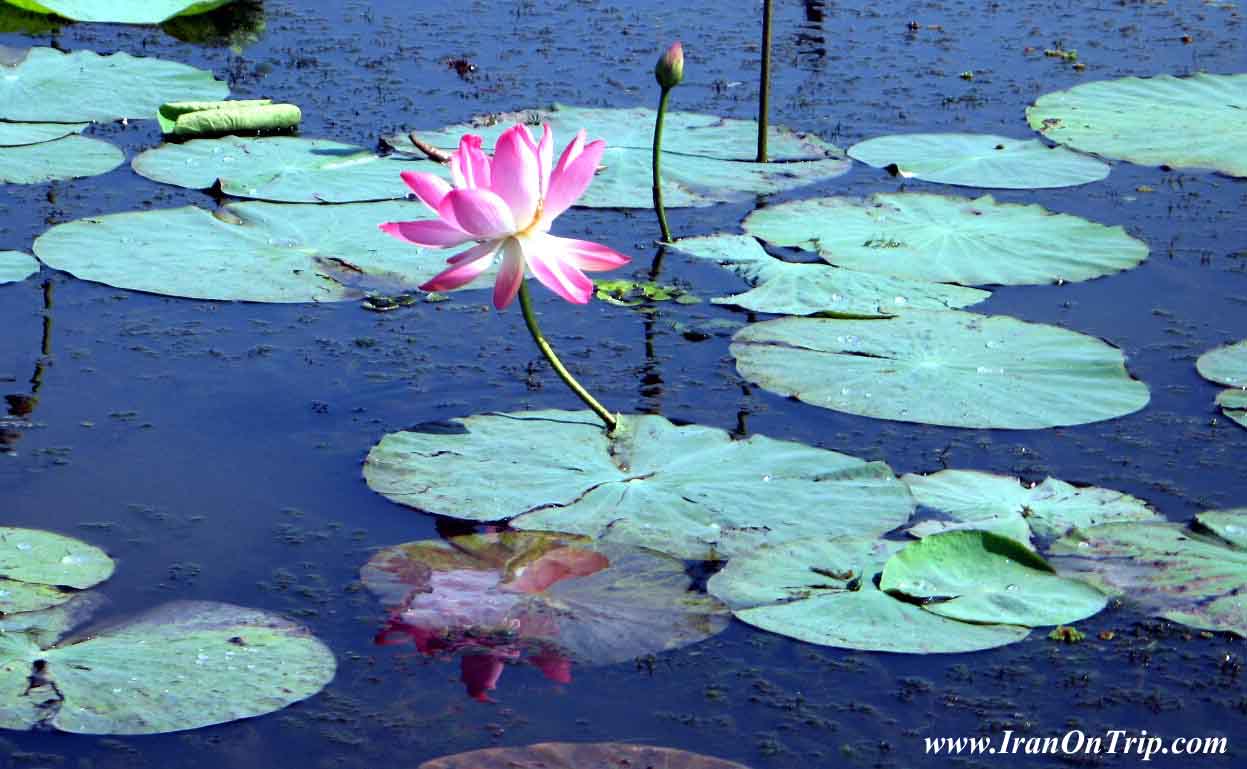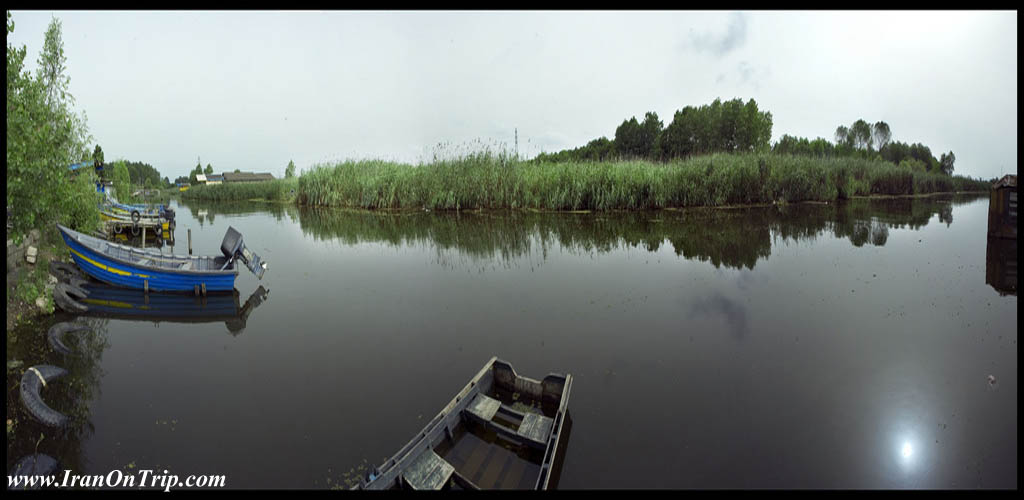Anzali Wetland

Anzali Lagoon (also Anzali Mordab, Anzali Bay, Pahlavi Mordab, Pahlavi Bay or Anzali Liman) is a coastal liman, or lagoon, in the Caspian Sea near Bandar-e Anzali, in the northern Iranian province of Gilan. The lagoon divides Bandar-e Anzali into two parts, and is home to both the Selke Wildlife Refuge and the Siahkesheem Marsh.Although the lagoon suffers from pollution, it is known as a good place for bird watching. The lagoon’s water ranges from fresh near the tributary streams to brackish near the mouth into the harbor and the sea. Studies indicate that in the 19th and early 20th Centuries that the lagoon had a much higher salinity.
The lagoon has decreased in size since the 1930s to less than a quarter of its former extent. However, in the last ten years (As of 2007) water salinity has increased both by the rise of the level of the Caspian Sea which has caused greater interchange of waters, and due to greater salt transport in incoming “fresh” water due to increased upstream irrigation.
 It extends to the south western coast of the Caspian Sea, west of the Sefid Rood delta and south of the port of Anzali. Rivers, streams and water from irrigation drains into this wetland, which covers an area of more than 100 square kilometers. Most of the rivers terminating in this wetland take their source in the mountains of Talesh, and after a steep incline end up in the plains. Apart from the economical and environmental aspect, it plays an important role in Gilan’s social, geographical, political and cultural atmosphere. It is also of importance in connection with several scientific backgrounds such as zoology, biology and environmental studies.The wetland displays a spectacular view. Its aqua atomshere is a suitable bed for the spawning of various types of fish, which play an important role in the economy of the region. This wetland is one of the best and appropriate surroundings for various waterfowls. Hundreds of species of migrant birds choose to settle in this area for breeding . The Anzali wetland and its islands have a beautiful view which attract nature lovers.
It extends to the south western coast of the Caspian Sea, west of the Sefid Rood delta and south of the port of Anzali. Rivers, streams and water from irrigation drains into this wetland, which covers an area of more than 100 square kilometers. Most of the rivers terminating in this wetland take their source in the mountains of Talesh, and after a steep incline end up in the plains. Apart from the economical and environmental aspect, it plays an important role in Gilan’s social, geographical, political and cultural atmosphere. It is also of importance in connection with several scientific backgrounds such as zoology, biology and environmental studies.The wetland displays a spectacular view. Its aqua atomshere is a suitable bed for the spawning of various types of fish, which play an important role in the economy of the region. This wetland is one of the best and appropriate surroundings for various waterfowls. Hundreds of species of migrant birds choose to settle in this area for breeding . The Anzali wetland and its islands have a beautiful view which attract nature lovers.
Fishery

Prior to 1950 the Anzali Lagoon provided about 70% of the commercial fish taken in Gilan Province, with catches of over 5,000 tons annually. Commercial fishing was done during the spring and autumn spawning cycles when the kutum, pike-perch and bream, would enter the lagoon from the Caspian. However, a number of factors acted against the continuation of the fishery and by the time commercial fishing ceased in 1960 annual catches were less than 100 tons.
Heavy siltation from increased upstream irrigation had resulted in the shrinkage and shallowing of the lagoon, increased pollution of the source waters and eutrophication due to an increased nutrient load contributed to the destruction of the fishery. More recently the surface of the lagoon has become gradually overgrown with aquatic macrophytes, primarily the non-native water-fern, Azolla filiculoides, and this has caused increased eutrophication, creating large areas of the lagoon where there is insufficient dissolved oxygen for fish to survive.
Geography
Located in an area of 15,000 hectares near the northern port city of Bandar Anzali in Gilan Province, Anzali is one of the few Iranian wetlands which have been registered as an international wetland in the 1975 Ramsar Convention. Wetlands are considered the most biologically diverse of all ecosystems; however, the Anzali Wetland has also been the victim of the authorities neglect, putting it in danger of grave ecological changes.
The use of Anzali Wetland’s bank as the city dump and the release of human and industrial waste into the wetland have already put in danger the lives of animal species and at least 78 species of birds living in the area. Besides, some local authorities plan to build a sports field in a peninsula connected to the wetland. This will be the final blow to the wetland, which has so far been prevented only by the serious opposition of environmentalists to the construction of the sports field.
The efforts made in Australia, Canada, the United States and many European countries to protect nature can be considered an epitome of the governments’ serious attention to the conservation of natural habitats, which are permanent sources of tourism attraction.
.....
.....
.....

.jpg)



























